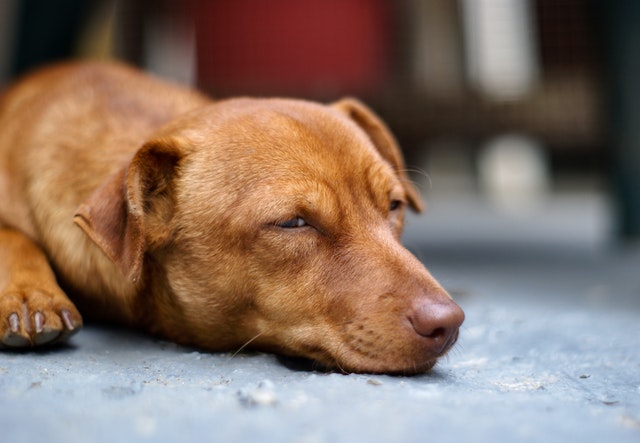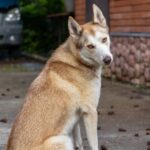Some breeds should be shown in the ring naturally with minimal grooming.
In some breeds, hours and hours of work are involved in preparing dogs for their brief ring appearances. Trimming, shaping and sculpting using various products and tools are the norm for breeds such as the Poodle and Bichon Frisé. Others, such as the Pekingese and Shih Tzu, need extensive brushing and coat care. Many Terrier breeds require constant coat care, much of it done by hand, to maintain the desirable correct, harsh coat and distinctive shape of the breed.
Au natural
However, what of the many breeds whose standards require that they be shown in a natural state? There are many more than you think, as you will find when you start reading different standards. In reality, grooming a breed whose standard calls for a natural coat is often more difficult to accomplish than grooming a highly trimmed breed. It certainly requires different skills.
There are a number of breed standards that specifically fault trimming and stylizing dogs of that breed. Some have very strong statements regarding trimming, even to the extent of stating that dogs that are trimmed should be penalized to the point that they are “effectively eliminated from competition.” It is a very strong statement indeed.
In reality, even breeds that are supposed to be shown naturally need grooming and, sometimes, judicious trimming. They just shouldn’t look like it was done. There are two things to keep in mind with any show dog. First, no dog should be shown dirty or smelly, so a bath before the show is in order nearly all the time. The timing of the bath might be an issue for hard-coated breeds because the bath will soften the coat, but it still needs to be done. Second, no dog should be shown with mats or tangles in its coat (except for corded breeds), so some brushing and detangling are almost always necessary.
In some breeds that are not supposed to be trimmed, a dog might grow excessive coat that hides the natural outline of the dog. In this case, it may be necessary to remove some of the excess coat. However, and this is important, there should be no sign of your work when completed – no telltale straight lines or marks in the coat showing where scissors or other tools were used. Obvious signs defeat the purpose.
Dealing with ambiguity
Judging breeds that have this kind of strong statement can create some questions for judge and exhibitor alike. Each judge must decide for himself just how to interpret the language of each breed’s standard. Breed standards tend to use words that allow some leeway in their interpretation. Purposely using words such as “somewhat” and “moderate” allows for the inevitable natural differences among individual members of a breed. This is so much a part of dealing with live animals that we sometimes tend to forget it. Each person reading a breed standard that uses words such as “moderate” will have a slightly different interpretation of just what constitutes “moderate” angulation, for example, in that breed. This same process of interpreting the meaning of a breed standard holds true when it comes to grooming.
For example, several breed standards use phrases like “Dogs whose coat has been altered by excessive grooming, sculpting, clipping, or by artificial means shall be so severely penalized as to be effectively eliminated from competition” (PBGV), or “Dogs with long or profuse feathering or furnishing shall be so severely penalized as to effect-ively eliminate them from competition” (Brittany), or “Specimens where the coat has been altered by trimming, clipping, or by artificial means shall be so severely penalized as to be effectively eliminated from competition” (Cavalier King Charles Spaniel), and “The Afghan Hound should be shown in its natural state; the coat is not clipped or trimmed,” or “Dogs that are overly trimmed shall be severely penalized” (Soft Coated Wheaten Terrier). But there is still much room for interpretation. What constitutes “excessive” can vary from judge to judge.
A standard’s admonition regarding grooming sometimes raises a conundrum for judges: how does one handle the situation when a clearly superior dog has been over-trimmed, while the lesser run-of-the-mill dog has not been trimmed? Which should win? Should the best dog be eliminated from competition for what is essentially a man-made mistake or overindulgence? Should an inferior dog win simply because another dog was too groomed? Every judge must decide for himself what a particular breed standard means. I guarantee there will be differences in interpretation, with no one “right” answer.
Professional handlers are sometimes criticized for having a tendency to “over-groom” some breeds. Remember, professional handlers need to win or they lose clients. If the majority of judges decides that a dog is “over-groomed” and does not reward that dog in the ring, the handler quickly gets the message and changes his ways. I’ve seen this happen in several breeds, especially when the parent club has taken a clear stand regarding the issue. I’ve seen the opposite as well, when a parent club ignores the widespread overuse of grooming and trimming techniques. Which is right? It depends who you ask.
Indeed, when watching some breeds in the show ring, it sometimes appears that the breed standard is ignored and dogs are presented carefully trimmed and groomed. If it becomes common practice to ignore this aspect of a breed’s standard, should a judge ignore the requirement too? It’s an easy question to ask but a difficult one to answer.





